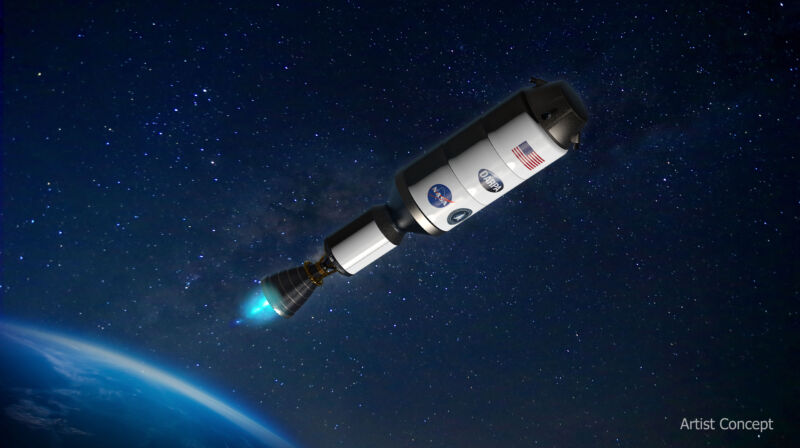
Enlarge / Artist concept of Demonstration for Rocket to Agile Cislunar Operations (DRACO) spacecraft. (credit: DARPA)
Nearly three years ago, the US Defense Advanced Research Projects Agency announced its intent to develop a flyable nuclear thermal propulsion system. The goal was to develop more responsive control of spacecraft in Earth orbit, lunar orbit, and everywhere in between, giving the military greater operational freedom in these domains.
The military agency called this program a Demonstration Rocket for Agile Cislunar Operations, or DRACO for short. The program consists of the development of two things: a nuclear fission reactor and a spacecraft to fly it. In 2021, DARPA awarded $22 million to General Atomics for the reactor and gave small grants of $2.9 million to Lockheed Martin and $2.5 million to Blue Origin for the spacecraft system.
At the same time, NASA was coming to realize that if it were really serious about sending humans to Mars one day, it would be good to have a faster and more fuel-efficient means of getting there. An influential report published in 2021 concluded that the space agency's only realistic path to putting humans on Mars in the coming decades was using nuclear propulsion.
Read 7 remaining paragraphs | Comments
